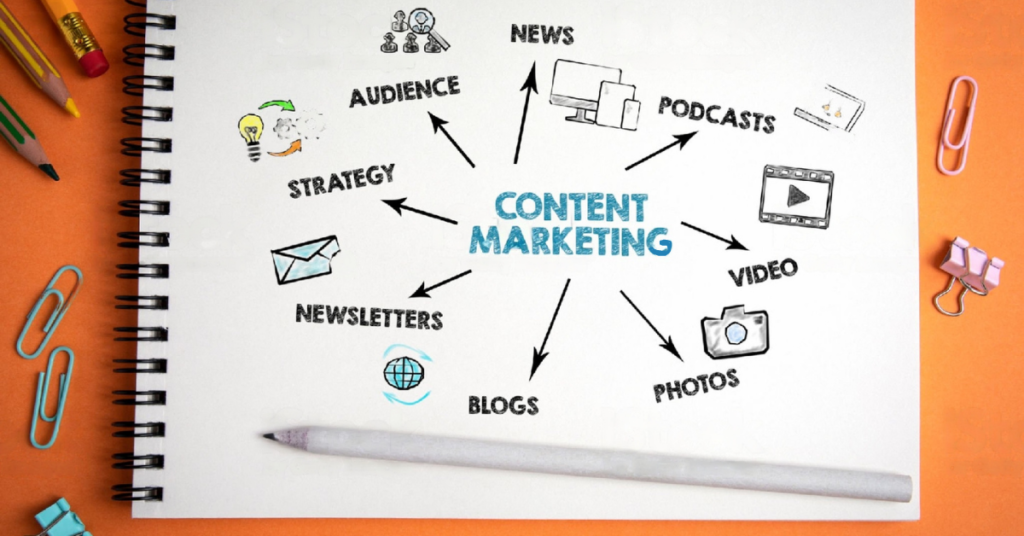Are you struggling to attract and convert visitors to your website? Do you want to learn how to make content that not only drives activity but moreover changes visitors into customers? In this article, we’ll investigate the basics of content marketing and give you noteworthy tips about how to make content that drives traffic and conversions.
Table of Contents
- Understanding Content Marketing
- Setting Goals for Your Content Marketing Strategy
- Understanding Your Target Audience
- Conducting Keyword Research
- Creating High-Quality Content
- Using Visual Content to Enhance Engagement
- Promoting Your Content
- Analysing and Optimizing Your Content
- Creating Content that Converts
- Measuring Your Success
- Common Mistakes to Avoid
- Conclusion
Content marketing is the method of making and sharing profitable, relevant, and consistent content to attract and retain a clearly characterized audience — and, eventually, to drive beneficial customer activity. The key to successful content promoting is to supply value to your audience through educational, informative, and engaging content that solves their issues and addresses their pain focuses.
Before you start making content, it is critical to characterize your objectives. What do you need to achieve along with your content marketing strategy? Do you need to extend website traffic, generate leads, or improve brand awareness? Once you’ve characterized your objectives, you’ll be able create a procedure that adjusts with those objectives.

To create content that resonates together with your audience. You wish to get who they are, what they’re inquisitive around, and what challenges they’re standing up to. Conducting market research and making buyer personas can assist you create a more profound understanding of your target audience and their needs.
Keyword research is the method of recognizing the keywords and phrases that your target audience is utilizing to explore for data related to your industry or item. By optimizing your content for relevant keywords, you’ll be able to progress your search engine rankings and pull in more activity to your site.

Making high-quality content is critical for pulling in and holding visitors to your website. Your content should continuously be informative, engaging, and easy to read. It should moreover provide value to your audience by tackling their issues or answering their questions.
Visual content, such as pictures and videos can help improve engagement together with your audience on your website. Visual content is more engaging and crucial than content alone, and it can help communicate complex thoughts more viably.
Promoting your content is an essential part for driving activity to your site. You can directly promote your content through social media and guest blogging. By promoting your content, you’ll be to able reach a bigger audience and pull in more activity to your site.

Analysing and optimizing your content is essential to improving your performance. By following metrics like website activity, engagement rates, and conversion rates. You’ll be able recognize areas of change and make choices on how to optimize your content for better results.
Making content that converts includes understanding your audience’s needs and torment points and providing them with a clear way to conversion. Your content should always incorporate (call-to-action) that empowers your audience to take the next step, whether that’s following your email list, downloading an eBook, or making a purchase.
To guarantee that your content marketing procedure is compelling, evaluating your efforts is vital. Utilizing tools like Google Analytics to track website activity, analysing engagement metrics such as time on page, bounce rate, and social media shares, monitoring conversion rates, and calculating the return on investment (ROI) of your content marketing expenditure are all fundamental aspects of measuring success. These metrics can help you understand which content relates with your audience, recognize areas for improvement, and make informed choices about future content creation and promotion. By reliably measuring these metrics, you can make data-driven decisions to optimize your content marketing strategy and generate traffic and conversions.

Crafting and executing an effective content marketing strategy can be challenging, and there are several errors that are commonly made.
These mistakes include:
- Failing to define clear objectives for your content marketing strategy
- Producing content that doesn’t offer value to your target audience
- Neglecting to promote your content effectively.
- Failing to measure the impact of your content marketing initiatives
- Overlooking the importance of optimizing your content for search engines
- Prioritizing quantity over quality
By avoiding these missteps and focusing on crafting high-quality, valuable content that relates to your audience, you can create a content marketing strategy that drives traffic and leads.
Creating content that attracts traffic and drives conversions is crucial for the thriving of your website and business. By getting a handle on the basics of content marketing, establishing objectives, comprehending your audience, conducting keyword research, creating top-quality content, promoting your content viably, evaluating and refining your content, and creating content that converts, you can plan a successful content marketing strategy that yields outcomes.
Do not disregard to gauge your success utilizing key metrics, avoid common mistakes, and persistently optimize your substance to improve its execution over time.


